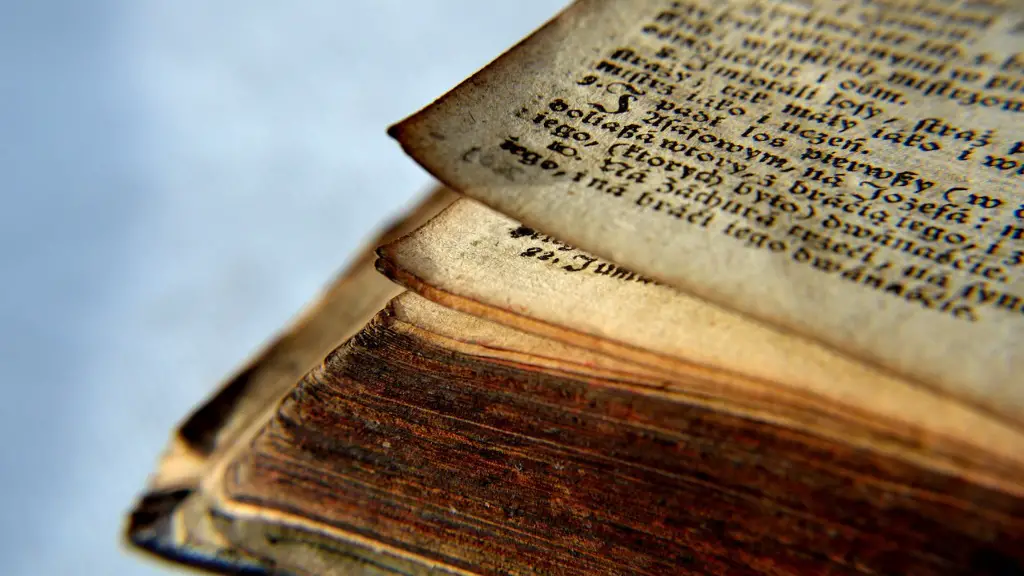Choosing What Would Belong in the Bible
When it comes to the inspiration and history of the Bible, its canonization is a major element. Over two thousand years ago, thousands of diverse writings were available to a wide range of religious communities. Jews and Christians chose a specific set of writings, body of literature and scriptures that would give shape to their faith and form the ultimate authority in it. This is how the Bible was canonized.
The process of deciding on the books of the Bible went through several stages. During the first Christian centuries, there was a lot of debate as to which books should be included in the Bible. Christians explored books, testimonies, and considered other historians’ works before deciding to exclude some, and recognize others as the ultimate authority for their faith.
One of the main focuses was deciding which Old Testament books would be included. When it comes to the New Testament books, various circles of Early Church Fathers had different perspectives on what should be included. Some utilized the Septuagint, a Greek translation of the Old Testament, as the basis for their canonization process, while others referred to the Hebrew Bible. This discrepancy between the two interpretations of the Bible led to greater debates and struggles, making it harder to reach a consensus.
The Authority to Decide
In the Christian faith, it was initially the Early Church Fathers who had exclusive authority to decide which books belonged in the Bible. These Church Fathers had had a broad education, learnings, personal experience, and divine revelations which aided them to evaluate what was themed as sacred and divine and belonged in the bible.
For the Jews, the Great Sanhedrin of Jerusalem was the sole ecclesiastical council that had authority to decide about the canonicity of the books. These councils were rich and knowledgeable, and were responsible for maintaining the unity of the Scriptures among the Jews.
Qualities of selected Writings
The writings used to form the ultimate authority for Jews and Christians alike had to meet certain criteria. All of the authors had to be in direct contact with the divine, either through visions or revelations, or through their great knowledge and wisdom.
The Old Testament books had to be in agreement with the established laws and beliefs of the Jews. As far as the New Testament is concerned, the books selected had to have been part of the apostles’ teachings and instructions, or kept in agreement with the already established books of the Old Testament.
Influential Ways of Canonization
Various communities of Early Church Fathers had their own approach to canonization. Generally, the guidelines and criteria chosen had to be in agreement with the teachings of Christ and the apostles.
Some Church Fathers interpreted different passages and verses of the Pauline epistles as confirmation that the Church should recognize the official list of books of the Bible. As a result, many Church Fathers concluded that both the Old and the New Testament had to be part of the Church’s faith, including the Jewish books of the Prophets, the Writings, and the Law.
Jewish communities had several Councils deeply affected their canonization. These Councils gradually discussed various books, scriptures, and psalms and by 498 A.D, finalized their canonization process to come up with the authentic Biblical books.
Witness to Canonization
The Old Testament books can be documented in multiple records of the Christian Church. Around 90 A.D., the Epistle of Barnabas witnessed to the formation of the Old Testament, followed in 150 A.D by letters of Justin Martyr, which confirm that he was directly influenced by the Old Testament.
The books of the New Testament can be confirmed with multiple records of the Early Church Fathers. Those books were reported in 170 A.D by Theophilus of Antioch and in 200 A.D by Tertullian.
Public Recognition of Canonization
During the fourth century, Church Fathers made a list of approved writings that would later be part of the New Testament. It was a major step in the canonization process that officially recognized the Bible as being complete and without equal in the church.
At the end of the fourth century, the most influential Council of the Church, the Council of Hippo, officially established a list of the books that formed the New Testament. It was a major step in the canonization process that officially recognized the Bible as being complete and without equal in the church.
Defining a Canonized Bible
Though Christian and Jewish churches chose different books for their Bibles, there is one thing that both agree on: the books that are part of the Canon must be inspired by the divine. This is the common ground shared by both faiths when it comes to the process of canonization.
The books that ultimately formed the Bible have gone through several stages of discernment and evaluation, either by Christian Church Fathers or by Jewish Councils. For Christians, the New Testament and the Old Testament, both scriptures have been defined according to their agreement with the teachings of Christ and the Apostles. For the Jews, canonization was determined by the teachings of the Great Sanhedrin and the compliance with the established laws and beliefs of the Jewish faith.
Guidelines for Choosing Writings
The authorities responsible for deciding which books were to be part of the Bible and which ones were to be excluded had to possess a great knowledge and wisdom. Among Christians, the Early Church Fathers had exclusive authority to decide which books belonged in the Bible, while for Jews, the Great Sanhedrin of Jerusalem is held as the sole authority to decide what is canonical.
The writings that ended up included in the Bible had to meet certain criteria. All authors had to have direct contact with the divine, either through revelations or visions or through their great knowledge and wisdom. The Old Testament books had to comply with the established laws and beliefs of the Jews, and the New Testament had to be in agreement with the teachings of Christ and the Apostles.
Creating a Canon
The process of deciding which books would form the ultimate authority for both Jews, and Christians went through various stages. During the first Christian centuries, a wide range of religious communities had different books and differing perspectives on which ones should be canonized.
For each, authorities responsible for deciding which works would ultimately form the Bible had to have had a vast knowledge and wisdom and follow certain guidelines when it came to deciding which books belonged to the Bible. This guided the selection process through which a canon was preserved.
Confirming Canonization
The Old Testament books have multiple records of the Christian Church that witness to their very existence. For the New Testament books, it was the Early Church Fathers that evidenced these books in various documents.
At the end of the fourth century, the most influential Council of the Church, the Council of Hippo, finalized the process and made a list of the books that formed the New Testament, giving the Bible its final shape. These events marked the end of the canonization process and gave the Bible its full authority.


